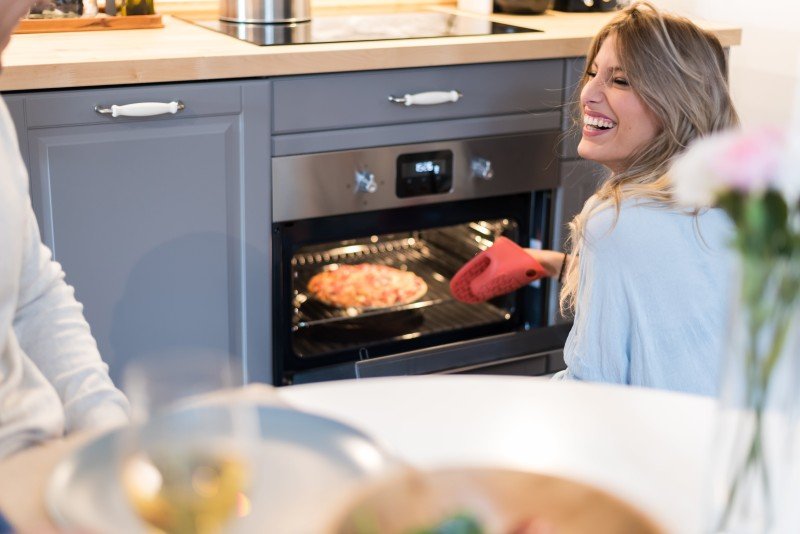
integratedovens8785
About integratedovens8785
How To Get More Results Out Of Your Ovens Built In
The Comprehensive Guide to Built-In Ovens: A Modern Kitchen Essential
Built-in ovens have become a staple in contemporary cooking areas, combining aesthetics, performance, and space efficiency into a single device. As property owners pursue both usefulness and style, comprehending the functions, Ovensandhobs.Uk benefits, and considerations of built-in ovens can considerably enhance the cooking experience. This short article explores what built-in ovens are, their diverse types, installation considerations, and FAQs to assist customers make informed choices.

What is a Built-In Oven?
A built-in oven is a kitchen appliance created to be integrated into cabinetry, creating a smooth, cohesive search for the kitchen. Unlike freestanding ovens, which inhabit extra flooring area, built-in ovens are confined within wall units or cabinets. They are readily available in different setups and sizes, permitting personalized services that deal with the requirements of varied households.

Types of Built-In Ovens
Built-in ovens can be classified into different types based on their features and cooking techniques. Here are some of the most common types:
-
Single Built-In Ovens
- Best for small kitchen areas and homes with modest cooking needs.
- Usually have one main cooking compartment, creating a compact footprint.
-
Double Built-In Ovens
- Perfect for devoted cooks and bigger families.
- Functions two different cooking compartments for flexible meal preparation.
-
Wall Ovens
- Installed at eye level for easy access.
- These ovens frequently include convection innovation for even cooking outcomes.
-
Steam Ovens
- Use steam to prepare food, maintaining moisture and nutrients.
- Great for health-conscious individuals.
-
Combination Ovens
- Combine microwave and standard oven functionalities.
- Offer flexibility for fast meals and standard baking.
-
Italian or European Style Ovens
- Frequently developed with unique visual appeals and advanced cooking innovations.
- Popular for high-end kitchen styles.
Advantages of Built-In Ovens
Built-in ovens use a selection of benefits that interest contemporary property owners looking for both performance and visual appeals. A few of these advantages include:
- Space Efficiency: Built-in ovens conserve valuable counter area, which is particularly helpful in smaller sized cooking areas.
- Boosted Aesthetics: With a custom look, built-in ovens improve the overall design of the kitchen while providing a seamless integration with kitchen cabinetry.
- Flexible Cooking Capacity: Available in various sizes, these ovens accommodate the cooking requirements of different families, from single residents to large households.
- Ease of access: The setup at eye level makes built-in ovens much easier to gain access to, decreasing the risk of spills or injuries when positioning or removing hot dishes.
- Lower Energy Consumption: Many built-in ovens come with energy-efficient modes that help in reducing electric intake gradually.
Installation Considerations
Setting up a built-in oven requires careful planning and factor to consider. Here are some factors to bear in mind:
- Dimensions: Before buying a built-in oven, measure the space readily available to guarantee an appropriate fit. Built-in ovens been available in particular basic sizes, so it is crucial to pick the right one.
- Ventilation: Adequate ventilation is required for efficient operation. Ensure there is a proper exhaust system that adheres to regional building regulations to prevent overheating.
- Electrical Requirements: Built-in ovens might require particular electric outlets or electrical wiring. Seek advice from a certified electrical contractor to make sure that the setup adheres to safety requirements.
- Professional Installation: Although some property owners decide for DIY setup, working with a professional can assist guarantee security and correct installation for optimum performance.
Maintenance Tips for Built-In Ovens
Maintaining your built-in oven not just lengthens its life expectancy but likewise guarantees effective operation. Here are some important maintenance pointers:
-
Regular Cleaning:
- Wipe down interior surface areas after each usage to avoid buildup.
- Usage vinegar and baking soda for non-toxic cleaning.
-
Check Seals:
- Inspect the door seals to avoid heat loss.
- Replace worn-out seals quickly.
-
Test Thermostat:
- Periodically inspect the temperature precision with an oven thermometer. Change settings as needed.
-
Service Annually:
- Schedule expert maintenance once a year to check electrical elements and make sure safe operation.
| Upkeep Task | Frequency | Function |
|---|---|---|
| Tidy interior | After each use | Prevent accumulation and smells |
| Inspect seals | Month-to-month | Ensure no heat gets away |
| Test thermostat | Every 6 months | Examine temperature level accuracy |
| Expert service | Annually | Guarantee optimum performance |
Frequently Asked Questions About Built-In Ovens
1. Do built-in ovens been available in various sizes?Yes, built-in ovens are offered in various sizes to fit different kitchen configurations and cooking needs. It is vital to determine the available area before purchasing. 2. Can built-in ovens be used as routine ovens?Absolutely. Built-in ovens operate like routine ovens,
allowing you to bake, broil, and prepare a range of meals. 3. Are built-in ovens energy-efficient? Lots of built-in ovens featured energy-saving features and are designed to utilize less
electricity than freestanding designs. 4. For how long does installation take?Installation time can differ based upon complexity however typically ranges from 1 to 3 hours. It is recommended to work with a professional for optimal results. 5. What is the life expectancy of a built-in oven?With appropriate maintenance, built-in ovens can last anywhere from 10 to 15 years or longer.
Built-in ovens offer a plethora of benefits for modern-day families, integrating convenience, energy efficiency, and stylish style into one option.
When choosing and installing a built-in oven, it’s vital to think about the type that best fits your cooking habits, readily available space, and visual preferences. By understanding the advantages, setup requirements, and upkeep required, property owners can raise their culinary experience and produce stunning kitchens that impress both family and visitors alike. Purchasing a built-in oven can be an advantageous addition that streamlines cooking, enhances home worth, and savors cooking thrills for many years to come.
No listing found.

